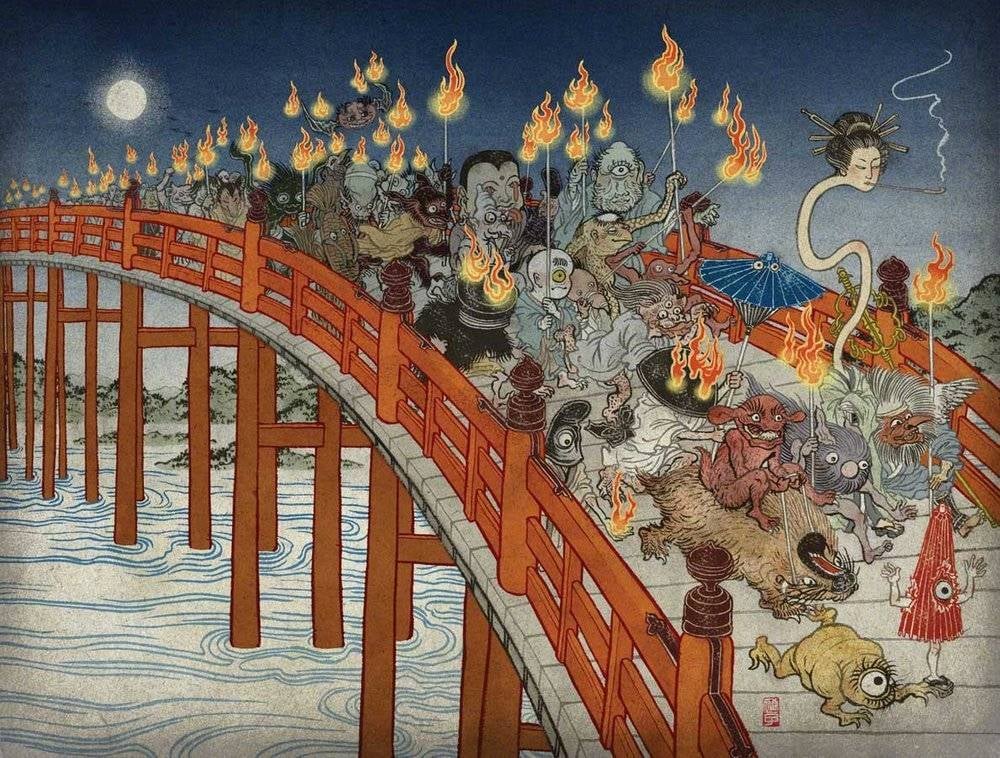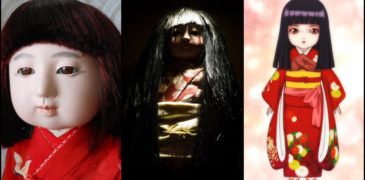
Hyakki Yagyō, translated to ‘Night Parade of One Hundred Demons’, is a supernatural event in Japanese folklore whereby yōkai of all kinds assemble – sometimes reportedly led by ‘Nurarihyon‘ – and march festively as an orderly procession throughout the night, escalating into chaotic riots on some occasions. Anybody unfortunate to encounter the parade will not survive as a witness: they will be ‘spirited away’ with the bandwagon into the otherworld. The affair has such a distinction in Japanese imagination that various artworks have depicted the scene and it has also been incorporated throughout media.
Although the exact origin is difficult to pinpoint as common in folklore, the earliest related tale is from Fukuhara-kyō. An adolescent nobleman is ordered to relocate to the Imperial Court from Kyoto and he leaves a servant at his residence as a dutiful housekeeper. Upon his return, he discovers an infestation of a hundred yōkai have occupied his house to host an unruly party. The nobleman prays to the Buddha and these infringing spirits are dispelled by dawn.

An alternate version has him encounter these during his trip to the Imperial Court – his carriage is ambushed from such a parade. Ogres smash the wagon with mallets while demon shoot fireballs to burn it. The nobleman escapes into nearby fields, prays and the demonic crowd are eventually expelled at dawn as darkness leaves.
A real life tradition inspired from this myth first supposedly originated in the Muromachi period (1336 to 1573) through handscrolls, residents abandoned tools on the street and these (in anger like a deranged Toy Story) transformed into a vengeful parade from being disowned, a phenomenon known as ‘tsukumogami‘. In Kyoto at the Taishogun Shopping Street– which is also known as “Ichijo Yokai Street” as an area thought to mark the boundaries between worlds– the Hyakuki Night Festival is performed on the third Saturday of October as an act to ward off such vengeful parades. Residents dress up as an ensemble of yōkai in the hundreds and perform their own parade to counteract that of the spiritual world – a cultural event increasingly attracting considerable tourism.
More Urban Legends:
Rokuroku: The Promise of the Witch (2018) Film Review – An Exceedingly Entertaining Haunted Funhouse Ride
There is something incredibly endearing about anthology films, especially those in the horror genre. In fact, I would wager to say that this format of filmmaking works best with horror,…
Japanese Urban Legend of The Okiku Doll
The Okiku Doll is a haunted object presently stored at the Mannenji Temple and originating in Hokkaido, Japan as a possession of a daughter, Okiku, from the Suzuki family. The…
Fox Tales (2022) Book Review – Curiouser and Curiouser
Fox Tales (Kitsune no Hanashi) is a Japanese compendium of short horror stories: “Fox Tales”, “The Dragon in the Fruit”, “Phantom”, and “The Water God” penned from the mind of…
Yokai and Urban Legends: Hasshaku-sama
Hasshaku-sama, translated to ‘Miss Eight-Feet-Tall’, is a Japanese urban legend – who is possibly classified as a modern Yokai interpretation of ‘ Taka-onna’– originating on the Japanese message board 2Chan…
Some say the countdown begun when the first man spoke, others say it started at the Atomic Age. It’s the Doomsday Clock and we are each a variable to it.
Welcome to Carcosa where Godot lies! Surreality and satire are I.
I put the a(tom)ic into the major bomb. Tom’s the name!



